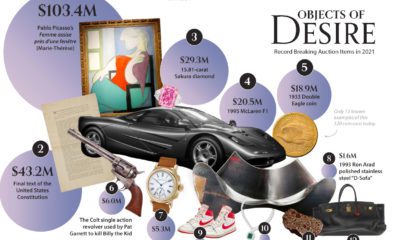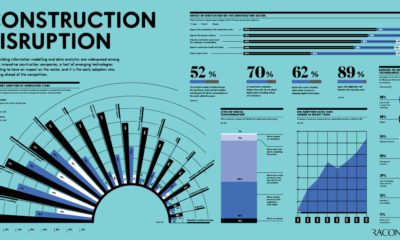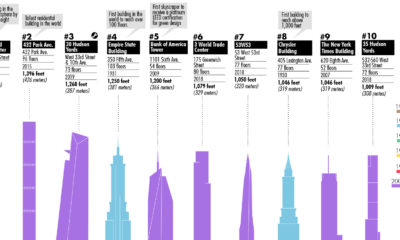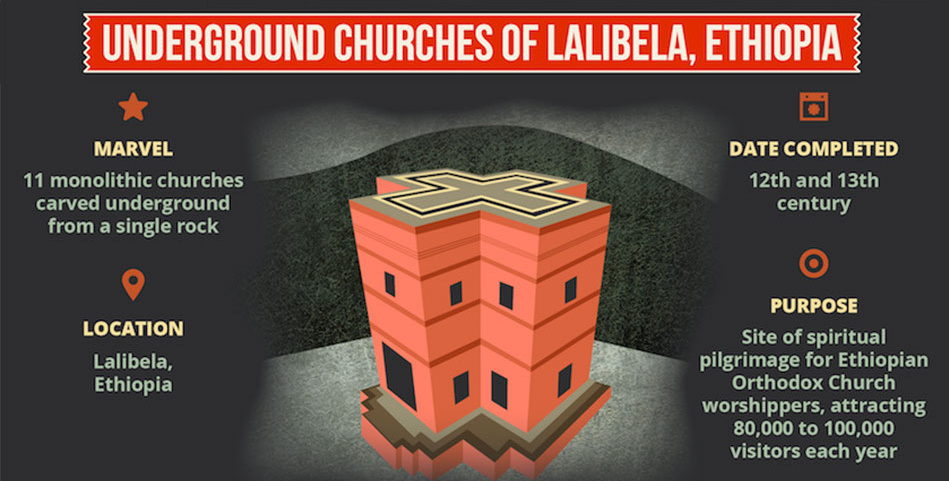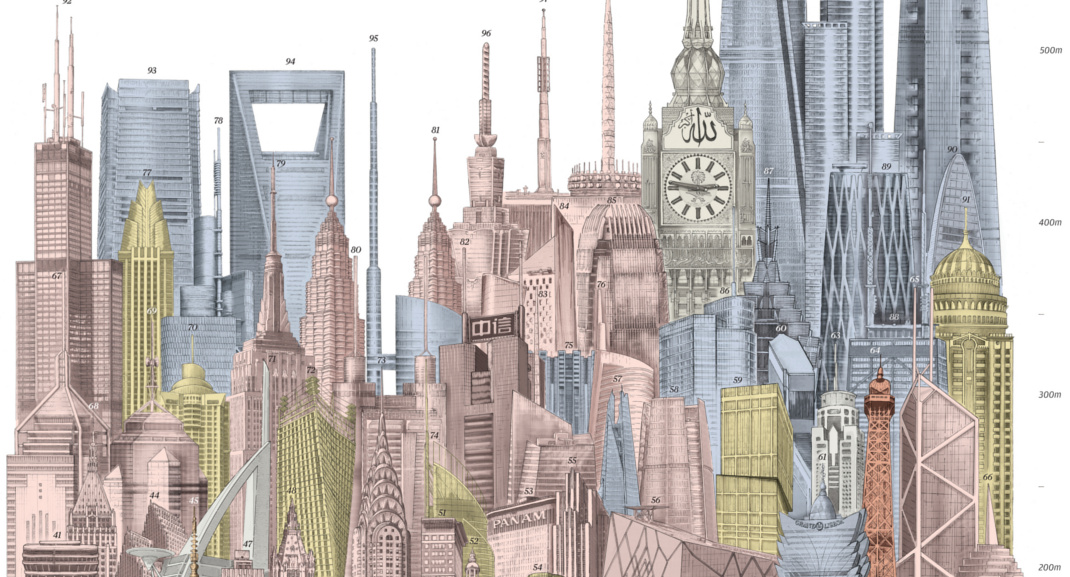9 Construction Projects That Broke the Bank
Large and sophisticated construction projects have a tendency to go over-budget and to sometimes stall indefinitely. However, there have been some that have disappointed more than others. Today’s infographic covers some of the most notorious construction projects that quadrupled in cost, become obsolete, or were downright botched. For good reference before reading this list, it may be worth checking out this previous infographic: Top 10 Civil Engineering Projects of All-Time. 10 Construction Projects that Broke the Bank
- Ryugyong Hotel, Pyongyang (North Korea) Construction began in 1987 and stopped in 1992 after North Korea spent as much as 2 percent of its GDP on the project and funding dried up.
- Montreal-Mirabel Airport (Canada) After $1 billion and five years of construction, this airport was hoped to take 50 million passengers a year. Instead it took 2.8 million, and ended up becoming a testing and cargo airport.
- Millennium Dome, London (United Kingdom) Costing $1.1 billion, ticket sales for attractions were well below expectations. The dome’s operator only made $275 million in revenues and were accused of fraud by vendors and suppliers.
- Burj Khalifa, Dubai (United Arab Emirates) The construction of the world’s tallest building coincided with the global financial crisis. Taking six years and costing $1.5 billion, Dubai had to borrow money from Abu Dhabi to complete it and the majority of residencies remain vacant.
- Strait of Messina Bridge (Italy) This 3.3 km bridge was expected to link Sicily to the Italian mainland. In 2013, it was discontinued because of lack of funds, and concerns that money would go to the Sicilian and Calabrian mafias.
- Mose Project, Venice (Italy) This project hopes to prevent Venice from sinking deeper into the lagoon on which the city is located. $7 billion has been spent to date, but it has been hampered with delays because of Italy’s economic condition.
- The Channel Tunnel (UK and France) 50km long, underneath the English Channel, the Channel Tunnel continues to be a heavy financial toll. The rail link connecting London to the British side of the Channel opened, costing $13.8 billion, the most expensive individual construction effort in the country’s history.
- The Big Dig, Boston (United States) The original cost estimate for the Big Dig, an underground road of eight to ten lanes, was expected to be $2.6 billion. Now it is expected that with interest, the total cost will come to $22 billion.
- The International Space Station (Space!) Costing over $100 billion over 13 years, the space station is the most expensive science project ever attempted. Critics suggest that the money could have better spent on robotic spacecraft missions or space exploration. Original graphic from: Gutter Masters
on Even while political regimes across these countries have changed over time, they’ve largely followed a few different types of governance. Today, every country can ultimately be classified into just nine broad forms of government systems. This map by Truman Du uses information from Wikipedia to map the government systems that rule the world today.
Countries By Type of Government
It’s important to note that this map charts government systems according to each country’s legal framework. Many countries have constitutions stating their de jure or legally recognized system of government, but their de facto or realized form of governance may be quite different. Here is a list of the stated government system of UN member states and observers as of January 2023: Let’s take a closer look at some of these systems.
Monarchies
Brought back into the spotlight after the death of Queen Elizabeth II of England in September 2022, this form of government has a single ruler. They carry titles from king and queen to sultan or emperor, and their government systems can be further divided into three modern types: constitutional, semi-constitutional, and absolute. A constitutional monarchy sees the monarch act as head of state within the parameters of a constitution, giving them little to no real power. For example, King Charles III is the head of 15 Commonwealth nations including Canada and Australia. However, each has their own head of government. On the other hand, a semi-constitutional monarchy lets the monarch or ruling royal family retain substantial political powers, as is the case in Jordan and Morocco. However, their monarchs still rule the country according to a democratic constitution and in concert with other institutions. Finally, an absolute monarchy is most like the monarchies of old, where the ruler has full power over governance, with modern examples including Saudi Arabia and Vatican City.
Republics
Unlike monarchies, the people hold the power in a republic government system, directly electing representatives to form government. Again, there are multiple types of modern republic governments: presidential, semi-presidential, and parliamentary. The presidential republic could be considered a direct progression from monarchies. This system has a strong and independent chief executive with extensive powers when it comes to domestic affairs and foreign policy. An example of this is the United States, where the President is both the head of state and the head of government. In a semi-presidential republic, the president is the head of state and has some executive powers that are independent of the legislature. However, the prime minister (or chancellor or equivalent title) is the head of government, responsible to the legislature along with the cabinet. Russia is a classic example of this type of government. The last type of republic system is parliamentary. In this system, the president is a figurehead, while the head of government holds real power and is validated by and accountable to the parliament. This type of system can be seen in Germany, Italy, and India and is akin to constitutional monarchies. It’s also important to point out that some parliamentary republic systems operate slightly differently. For example in South Africa, the president is both the head of state and government, but is elected directly by the legislature. This leaves them (and their ministries) potentially subject to parliamentary confidence.
One-Party State
Many of the systems above involve multiple political parties vying to rule and govern their respective countries. In a one-party state, also called a single-party state or single-party system, only one political party has the right to form government. All other political parties are either outlawed or only allowed limited participation in elections. In this system, a country’s head of state and head of government can be executive or ceremonial but political power is constitutionally linked to a single political movement. China is the most well-known example of this government system, with the General Secretary of the Communist Party of China ruling as the de facto leader since 1989.
Provisional
The final form of government is a provisional government formed as an interim or transitional government. In this system, an emergency governmental body is created to manage political transitions after the collapse of a government, or when a new state is formed. Often these evolve into fully constitutionalized systems, but sometimes they hold power for longer than expected. Some examples of countries that are considered provisional include Libya, Burkina Faso, and Chad.

